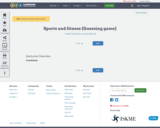
A worksheet
- Subject:
- Language Education (ESL)
- Material Type:
- Lesson
- Author:
- Malika Rajabova
- Date Added:
- 11/21/2021

A worksheet

This resource was created by Jeanine Figueroa, in collaboration with Dawn DeTurk, Hannah Blomstedt, and Julie Albrecht, as part of ESU2's Integrating the Arts project. This project is a four year initiative focused on integrating arts into the core curriculum through teacher education, practice, and coaching.
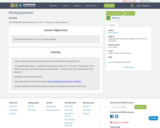
This activity will allow students to use "to+v1" structure to give purposes.

A collaborative project of stories written by English language learners which were interpreted and illustrated by art students in drawing classes.

This is one of my favorite reading lessons because I can use it with business students, adults, and kids -- it’s a hit with all of them. Students will have the opportunity to read, speak and learn about the history of a search engine most of us use every day.You can access 150+ more free lessons like this with a free Off2Class account!

For building sentences, students discuss in groups of 4 how to use ChatGPT to create sentences based on the situations. They ask ChatGPT to provide suitable sentences for the situation that they want.

In this activity students will talk about the daily life of international students and share any experiences they have about studying overseas. Students will play a card game where they decide which items they would take or leave behind while packing for a semester abroad
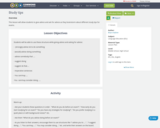
This lesson will allow students to give advice and ask for advice as they brainstorm about different study tips for exams.

This lesson is intended for Emergent Bilinguals. The focus is an introduction to "subject and predicate" with an emphasis on agriculture vocabulary.
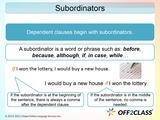
This ESL lesson plan download on subordinators, coordinators and transitions is aimed at students with intermediate proficiency levels (B1+ level). Ensure you guide your student on appropriate usage in both formal and informal contexts and in spoken and written registers.If you want additional lesson plans and support, including teachers’ notes, be sure to register for a free Off2Class account.

This resource was created by Jeanine Figueroa, in collaboration with Dawn DeTurk, Hannah Blomstedt, and Julie Albrecht, as part of ESU2's Integrating the Arts project. This project is a four year initiative focused on integrating arts into the core curriculum through teacher education, practice, and coaching.
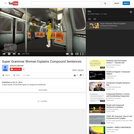
A cute cartoon video of a superwoman and a student where they discuss how to connect compound sentences.
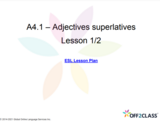
What students will learn about superlative adjectives?In this lesson students will learn how to:use the form of the superlative, including the irregular superlatives: best, worst, and furthest. use the + the superlative: diamond is the hardest natural material in the world.use the prepositions in and of with groups and time periods: it was the most popular song of the 1980s.use one of the + superlative plural noun + preposition: it’s one of the biggest cities in Asia.Before you teach, keep in mind: for short adjectives, we make the superlative by adding —est (shortest). For long adjectives, we make the superlative with most (most interesting).If you want additional lesson plans and support, including teachers’ notes, be sure to register for a free Off2Class account.
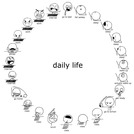
You will find here three activities to work on the topic routines.
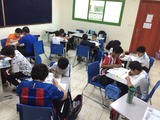
a new way of teaching
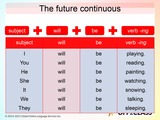
Using the Present Continuous as a starting point, this lesson plan will help pre-intermediate students construct sentences such as “I’ll be eating at home.” In addition, students will practice using the Future Continuous with expressions of time. You can access 150+ more free lessons like this with a free Off2Class account!
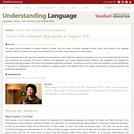
Even among educators who have been successful at educating ELLs under traditional supports and programs, the level of knowledge required to do the job successfully has increased. This paper considers more aggressive and creative capacity-building initiatives that strengthen and integrate the disciplinary teaching strategies with literacy and language development strategies. The authors discuss the value and implications of new partnerships, of structures for collaboration, and of time dedicated to engaging experts from different fields in the design and delivery of teacher preparation and professional development.
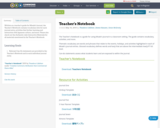
Written as a teacher's guide for Misaki's Journal, the Teacher's Notebook contains vocabulary lists for each journal entry, activities that further learning and interaction with Japanese culture, and more.
Please also check out the Authentic-Like Interactive Materials for all materials mentioned in the Teacher's Notebook.
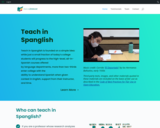
Teach in Spanglish is founded on a simple idea: while just a small fraction of today’s college students will progress to the high-level, all-in-Spanish courses offered by language departments, more than two-thirds enter college with the ability to understand Spanish when given context in English, support from their instructor, and time.
Over nearly a decade in the classroom, our team has shown that students who took Spanish for at least two years in high school, at least one year in college, and/or who were raised in a bilingual environment (Spanish as a Heritage Language speakers, or SHL) can, with proper support, engage in high-level analysis of Spanish and Spanglish primary sources and original texts, utilizing insights from linguistics to both structure the classroom experience and guide students in their engagement.
The teach in Spanglish website links to a form that allows instructors to request access to a free Canvas site that contains instructor facing videos, quizzes, and other modules to help get started teaching in Spanglish.

This pre-intermediate lesson plan starts with a review of some already familiar vocabulary like yesterday, tomorrow and next year. The lesson continues by introducing the featured adverbs of time. Then, students will have ample opportunity to practice using the target vocabulary. I love using these activities as review in later lessons as well. By the end of the lesson, your students will have a clearer understanding of adverbs of time. They’ll leave class feeling confident enough to begin using them in everyday conversation.If you want additional lesson plans and support, including teachers’ notes, be sure to register for a free Off2Class account.